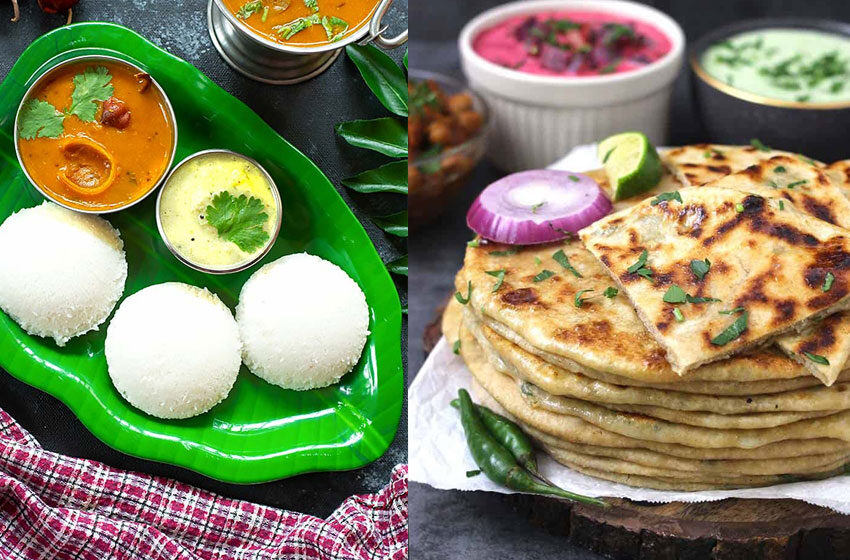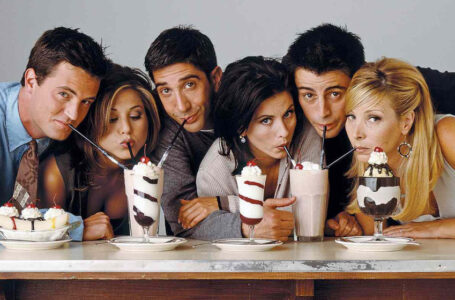Idli Vs Aloo-da-parantha

If you’re travelling in India, and you need one dish you want to rely on, trust the masala dosa. It is available everywhere, can’t be messed up, and gets made in seconds. This is the solemn advice of a North Indian friend of mine. A south Indian dish may have conquered India today, but twenty-five years ago, when I was growing up in North India, the story was very, very different.
In the late 80s, I was a pre-teen growing up in Fazilka, in the state of Punjab. This is a town that’ll cause you some difficulty to locate, even a largish map of India. It consisted of a clock tower, a railway station, a couple of hundred houses, and a large army cantonment. With exactly one school that offered any education in English.
We moved there in 1988, after my father (an army officer), was posted there. I was admitted to the fifth standard. The first day seemed to pass off normally. Like with any new student, the children were reluctant to open up to a stranger. I did my lessons, ate my tiffin, and went home all by myself.
By the next day, everything had changed. Wild rumours had spread that a foreigner had joined the school. (The kids there had never seen anyone who was not from the local tahsil.) A Madrasi had joined – short and dark and English-speaking!
Halfway through my second day at school, I noticed something curious. Groups of children from the other classes would come and stare through my classroom window. They’d duck if I glanced towards them. At recess, the trickle became a deluge. Literally hundreds of students were outside my classroom, wanting to see the ‘Madrasi’. The kids flocked around me with questions – Madras kitthe hega? Tu inna kaala kyon hai?
It took me all my scanty knowledge of Hindi to explain that I was as Indian as them. It didn’t help – how could an Indian not know Hindi? It was to be the first of my experiences with the half-arrogant, half-ignorant notion among North Indians that speaking Hindi is a prerequisite for being a true Indian. Luckily (for me) the teachers, alarmed at the growing crowd, dispersed it – by giving several boys a quick caning. But I could never completely dispel the notion that I was a foreigner.
The next day came the affair of my tiffin-box. Which was pulled out of my schoolbag and opened by my classmates. My consent was assumed. It was a shock for me to learn that people considered the contents of your bag as theirs – and I could do the same. So despite protests, my box was opened and circulated for inspection.
It had contained idlis – strange white round things, looking unlike anything they’d ever seen. E kya haiga? I said it was an idli, which was made of rice. Tussi Madras vich paranthe nahin khande ho? Kinne ajeeb ho. Clearly, the idea that people around the world didn’t eat paranthas was news to them. However, they being kids, the news didn’t inhibit them from parcelling out my idlis and wolfing them down, leaving me hungry. The idea that I could help myself to bits of their food was abhorrent to me.
The next day I was informed solemnly by several of my classmates that I’d eaten the wrong things all my life. They’d told their mothers about the new phenomenon in their classroom (i.e. me), and what it ate. Good children eat paranthas with ghee if they were to grow up strong; rice was good only if made into pulao. I was offered half-eaten paranthas by eager faces happy to see me on the path of nutritional virtue. By ‘offered’ I mean the Punjabi meaning (true then as it is now), which consists of practically shoving the thing down the throat, whether the guy wants it or not. No scope for polite refusal.
The class-teacher, Ms. Doda, was a pillar of support those days. She seemed to have a better understanding of cultures beyond that of Fazilka. She explained to the class that it was possible and morally permissible for people to eat things other than paranthas (though perhaps not something as weird as idlis). It was also acceptable that one’s mother tongue may not be Hindi, though it was a duty to learn it if one wanted to live in India. As a foreigner, I was making a great effort, which should be an example to the class (their marks in academic Hindi were the opposite of their fluency).
This support was not without its costs. Which I came to realise in my History and Mathematics classes.
The History syllabus taught India’s history from Mauryan times to the Independence Movement, but covered very little of events in the far South. Which fed into the students’ prejudices – if Indian history included nothing about Madras, surely it was another country. I said that South Indians have contributed much to Indian history – Rajaraja Chola in ancient times, Rajaji and Subramanya Bharati in the Freedom Struggle. They opened their books and didn’t find those names. (Even today, teaching the history of regions far from Delhi continues to be neglected in the north of India.)
Mathematics (never my strong point) was trouble in the other direction. Ms. Doda subscribed to a prejudice common among many North Indians that southerners are very good in the subject. This is probably because several southerners in the north are in the banking profession. For me, it meant being the teacher’s first choice when a sum had to be done on the blackboard, and a set of withering insults after I proved (almost always) incompetent at it.
In the next few months, familiarity and a growing grasp of Hindi (especially the swear-words) helped mitigate the sharp cultural differences. A few sacrifices were made – especially the giving up of idlis for roti-subzi as tiffin. The mathematics insults never waned.
Looking back, all this might seem xenophobic and racist. But what happened in the next twenty years has helped a great deal – globalisation, cable TV, the IT revolution, migrations from the north to Bangalore and Hyderabad, and the rising demand for English. Fewer people in the north now get bothered about my patriotic duty to learn Hindi. They don’t bother me with math questions. I’ve even had advice from north Indians about the low-fat, high-energy breakfast they’re discovering – idlis!
And finally, I’m now recognised as a full-fledged Indian, not a Madrasi.
***
Till the early 90s, a common name for all Indians originating from Tamil Nadu, Karnataka, Andhra Pradesh, Kerala and Pondicherry. Till Independence, all had been part of Madras Presidency. Since Madras city was renamed Chennai, the name ‘Madrasi’ is fading out. It’s a name that irritates South Indians, whose diversity it hides.







